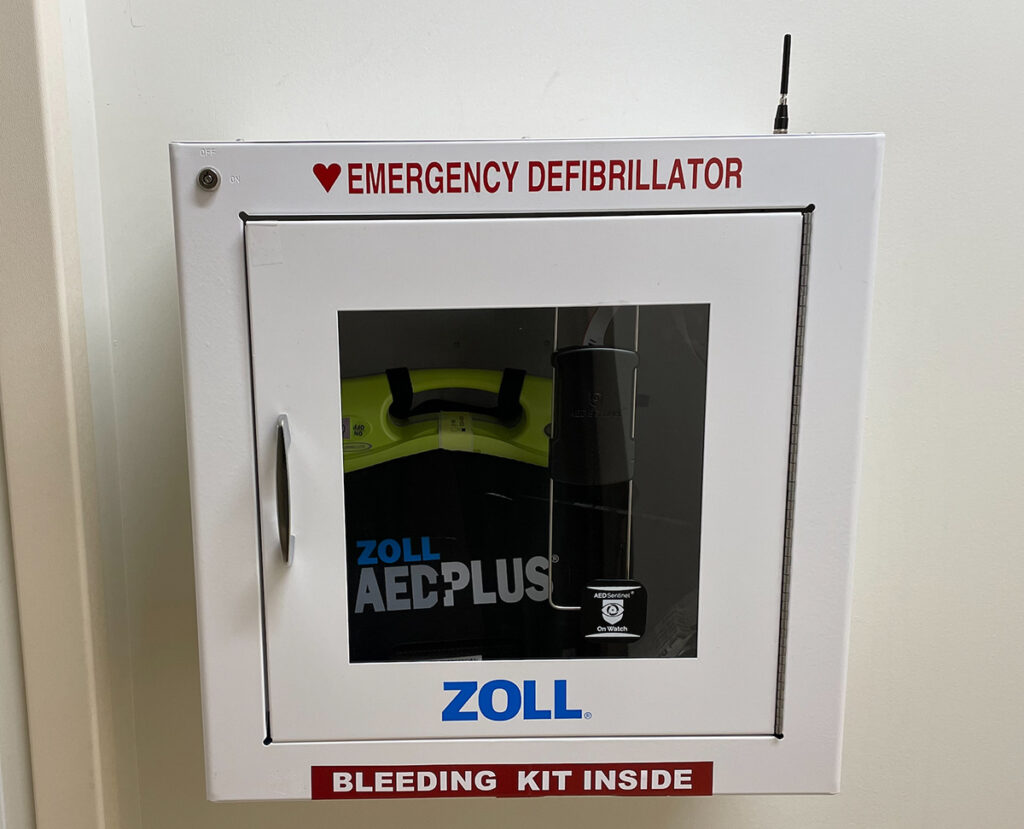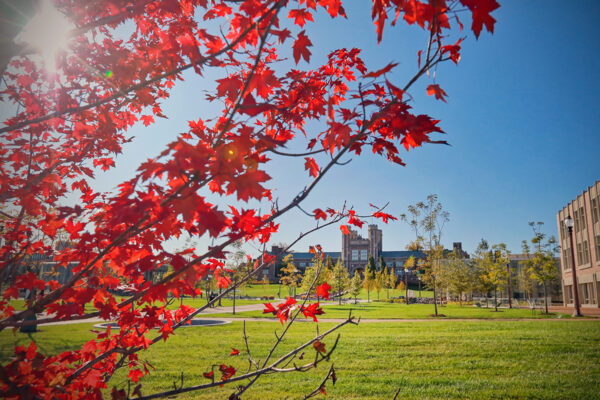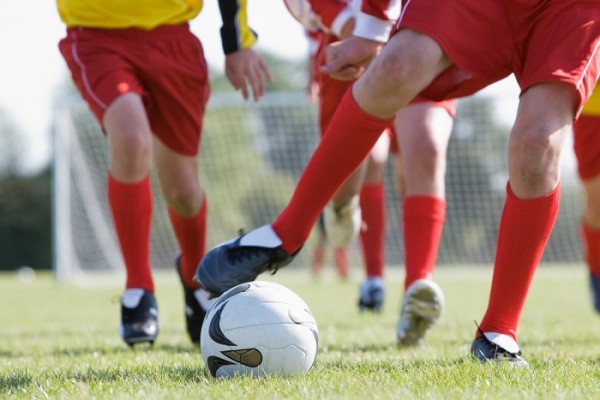As Chet Hunter, assistant director of emergency management at Washington University in St. Louis, watched paramedics treat Buffalo Bills safety Damar Hamlin earlier this month for cardiac arrest, he experienced two powerful emotions: one, hope that Hamlin would survive; and two, gratitude that Washington University in St. Louis has equipped every building on every campus with an automated external defibrillator (AED), a device that can save lives in such emergencies.

“We are constantly adding new AEDs in our buildings and facilities across the region and continuing to educate our community about their use,” Hunter said. “The implications are huge, not just for our students and employees, but for the community at large.”
In the wake of Hamlin’s hospitalization, Hunter and Ky Kee, emergency management program manager for life and campus safety, are encouraging community members to familiarize themselves with the 400 AEDs across the university — where they are, what they do and how to deploy them. On-site demonstrations are available for student organizations, departments, offices and other campus groups that would like to learn more.
Most of the university’s AEDs are located in windowed boxes near elevators, lobbies and other heavily traveled locations. To find the closest AED, visit the university’s interactive map and click on “Safety,” or check the Building Emergency Plan placards, which include building maps. The maps are affixed near entrances, elevators and stairwells.
Kee said that anyone — students, employees and visitors alike — can use campus AEDs; no medical training or expertise is required. An AED automatically analyzes a person’s cardiac rhythm and delivers electrical shocks only if needed.
“This is a lay device that actually speaks to you and coaches you step by step through the process,” Kee said. “There is a misconception about shocking someone, but an AED will only shock if necessary. And in that case, the device will tell you that and what to do.”
During campus demonstrations, Kee shows participants where to find the AED cabinet at their location, how the AED responds to different medical situations and how to unpack the device and apply its pads to a dummy. Kee also shows users the bleeding kit located in every campus AED cabinet. Each kit contains trauma gloves, a tourniquet, gauze and emergency trauma dressing.
“The goal is to get people comfortable with using the AED,” Kee said. “I emphasize that WashU is just one of your communities. If you are out in public — at the grocery store, the rec center, your houses of worship — you’ll see that device. I want you to feel comfortable in any place where you are to jump in and save a life.”
To schedule a demonstration, email Kee at washuready@wustl.edu.
Kee also encourages community members to take a CPR course that includes AED training. After calling 911, administering CPR remains the vital next step in responding to someone who is not breathing. Kee can help connect community members with campus CPR programs and local “Stop the Bleed” trainings.


